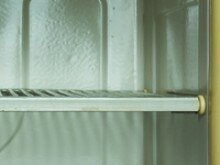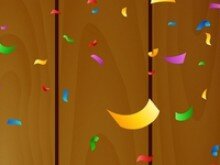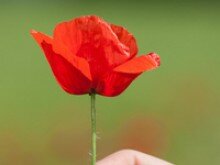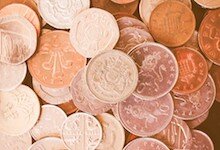The City of the Walking Flower
“Jerusalem is best kept in the cellars of the imagination,” writes Salman Masalha in this wonderful meditation on the city. A place of religion, myth, metaphor and legend, inhabited by strangers, “it becomes clear that strangeness is an inseparable part of the city.” Moreover, he argues, “with so much past in Jerusalem, it is hard to see the future, because the future of Jerusalem always pulls towards the past.”
Here, on the watershed of the winds, between reality and imagination, between the utopia of the celestial spheres and the reality of the underworld, stands Jerusalem, piles of stone separating sea from sea, tomorrow from yesterday, the green from the desert and above all, the sacred from the profane. The city stands here like a broad cosmic-political terminal, as the starting line for the competitions in which all the participants race to other places and other times. Here in Jerusalem, and at the four corners of the earth, the descendents of Moses, Jesus and Muhammad jostle one another on the track to take part in the Olympics of the evil spirit that knows no rest. They are all poised, crouching on the ground in awe of the holy, waiting for the starting gun of the race to defeat the forces of gravity.
As a child, in my imagination Jerusalem was inextricably linked to the apocalyptic day of the great dash forward from which there is no return. The scenario, including the instructions issued by the director sitting on a raised platform in the dome of the sky, was determined in advance and minutely detailed. In the play of the End of Days, no freedom to improvise is given to mortal actors. These must play the roles determined for them in advance, with complete faith and with no reservations or questions like what if and maybe and nevertheless. The Jews, says the scenario, are destined to destroy the Muslim mosques in Jerusalem. In reaction to the unlimited support given the Jews and the Jewish state by the West, which as everyone knows is largely Christian, the Muslims will rise up and destroy the Christian churches. The West’s reaction will not be long in coming: it will gather its armies to conquer the K’aba. And thus, in an uncontrollable chain reaction a great world war will break out, which is the Apocalypse, until the Messiah comes and brings a new world order, entirely different from the one everyone is talking about these days. I never imagined, back in the days of my childhood, that Fate would call upon me to rub shoulders with the inhabitants of this city, nor did I conceive of the possibility of living in the eye of the storm destined to take place at the End of Days.
In the year 1690, there was also someone who thought that the end of days was happening before his lightless eyes. No one knows his name, and chances are that no one ever will. A man from Aleppo, ’Abd al-Ghani al-Nabulsi by name, arrived that year in Jerusalem, prayed there, strolled through its markets, met its people and, as is the habit of many pilgrims, put his impressions down in writing. One day he went out to a hill west of the city walls. The hill served as a Muslim cemetery, and the graveyard still exists in the center of Jerusalem in the Mamilla quarter. His guides related that here at the edge of the cemetery someone once tried to dig a grave, and suddenly found within the grave a Muslim man sitting and reading the Quran. The man from the grave addressed him, and asked what had happened, whether the Hour, the End of Days, had come. The digger, frightened by what he saw, fled for his life. However, after a while he returned to the place accompanied by other people and found no trace either of the digging or of the grave.
About 200 years later, someone else thought the End of Days was near. In 1874 a Dutch woman came to the city of Jerusalem. Here, the citizens called her the Dutch Princess. She decided that it was not enough to dream, and the time had come to see to the practical aspects of the Redemption and the End of Days. Therefore, she embarked upon the construction of a building that was to serve as a huge hostel that could accommodate the 140,000 of the Children of Israel who would remain alive at the End of Days. The place she selected was none other than that same plot west of the Muslim cemetery in Mamilla. The man from the grave in the previous story is of the Children of Ishmael, but had his luck been with him, he might have been fortunate enough to have lodged in a five star hotel as the “Shabbes goy” (a gentile who performs household tasks prohibited to Jews on the Sabbath) for the surviving Children of Israel. The Dutch Princess never completed her project because she ran out of money, which just goes to show you that even in the business of the End of Days things run according to the prices of the earthly marketplace.
On that site now stands the Liberty Garden, which, like many of the Liberty Gardens in the Holy Land, serves as a site for encounters of the sort which was accompanied by the expulsion from the Garden of Eden its day. Thus, throughout the years, the people of Jerusalem, the living and the dead, dwell there in expectation of the Day of Judgment that will certainly come. Jerusalem is slowly borne above the earth’s surface. As if the stone of the city were not the same stone, as if the wind were not the same wind and as if the people were not the same people.
Jerusalem, unlike other places, has laws of its own. The laws of physics do not apply here. The city of Jerusalem is borne above the earth’s surface by supreme metaphysical forces, and any attempt to descend with it to the firm ground of reality, to the street, to the cafe, to the noise of the buses and to the municipal garbage leads to the crashing of dreams soaked in the holiness of the end of days and fantasies soaked in the juices of divinity. Thus the city is famous for its syndrome, the Jerusalem Syndrome. Anyone who strolls through the streets of the city is likely to encounter people whose dreams have all shattered on the ground of reality in this strange city. Where in this world is there another city with a syndrome all its own?
Jerusalem is best kept in the cellars of the imagination. It is recommended, and perhaps desirable, to write about it and to write poems for it. The city does right by poets and provides them with an abundance of color, images and metaphors. However, it is not a good idea, and perhaps even dangerous, to break it down into small details, because reality could hit you in the face and dealing with this will be difficult. Jerusalem, all of whose inhabitants are strangers, does not welcome strangers, because strangeness here has its own hierarchy. I too am a stranger in Jerusalem and it does not welcome me either. But what am I, a mere mortal, compared to its many days through which so many mortals have passed?
During the 1870s, about a hundred years before I myself came to Jerusalem, a man of Damascus called Nu’man al-Qasatili, came to the gates of Jerusalem seeking progress and openness. The Damascus of those days looked to him like the epitome of backwardness, so he set out for what he imagined to be the city of lights. Of course he did not find the city of lights, and he immortalized his impressions in a chronicle of his journeys in the provinces of Greater Syria. He noted that there were about 40,000 inhabitants in the city at the time. The natives were a minority in Jerusalem. The rest were a motley of strangers, Jews, Muslims and Christians. The majority of the city’s inhabitants had arrived there from distant places, that is, from beyond the sea and from beyond the desert. Today, the population of Jerusalem is more than 400,000 souls. The inhabitants of today are new strangers, or the descendants of yesterday’s strangers. The strangers of today are the fathers of the strangers who will be born here. Gradually it becomes clear that strangeness is an inseparable part of the city. The strangers who have settled in the city like it when strangers come to visit. They wait expectantly for the delegations of visitors because they provide a significant part of their income, as al-Qasatili says. Those who have already settled in Jerusalem do not love the other strangers who have already settled here, but all of them want the money of the strangers, that is to say – the tourists – because that is how they earn their living.
Who builds whom? Does man build a city in his own image, or is it the city that builds man in its image? This question looks simple, but it is not at all with respect to Jerusalem. Cities that are built along the seacoast take their character from the sea. They face the sea and draw serenity from it. The cycle of the ebb and flow of the waves beating endlessly on their shores pervades them with a sense of life without end. In Jerusalem too, there is a cycle, but it is the cycle of a volcano and you never know when it will explode. There is also a sea near Jerusalem. But in this Jerusalem sea you always lie on your back with your eyes looking up towards heaven. You needn’t lift a finger in order to float because Jerusalem’s sea always pushes you upward. You can sink only into hallucinations of other places and other times. Any attempt to stand with your feet on the ground, to be in reality, demands a supreme effort and in many cases it demands a lot of tears, and not always because of the salt of the Dead Sea.
I, as I have told you, was not born in Jerusalem. I came here in the seventh decade of the 20th century, to join the congregation of strangers that inhabit it, because Jerusalem is ultimately a city of eternal strangers. The connection to the city is not a connection to place, but rather a connection to time. The connection is not to stone, object, or anything earthly, but rather to moment, to feeling, to experience. And Jerusalem, as opposed to many cities, has too much time, too many moments and too much past. And with so much past in Jerusalem, it is hard to see the future, because the future of Jerusalem always pulls towards the past. The people of Jerusalem walk through it with their eyes stuck in the backs of their heads and their faces eyeless. This is perhaps another reason why the people of Jerusalem frequently fall down in the street. Every movement in it, even the smallest, leads to a wound. Every stone you turn over in this city could be hiding a scorpion, because, as the tradition has it, Jerusalem is a golden chalice full of scorpions. The Jerusalem of yesterday, today, and presumably tomorrow sits on the watershed of the winds, between the desert and the mountain. It is a mixture of Hebron and Warsaw. Two seas battle for it, the Mediterranean Sea to the west and the Dead Sea to the east. A sea of life and a sea of death, exactly like its history. But it seems as though more and more it is turning its back to the west and not dwelling in the east. It pulls towards the past, to Creation. Too much past has passed in Jerusalem, and in a place where the past is so dense, it is hard to see the future through it.
And at that very place in Mamilla, al-Nabulsi writes, he saw something wonderful. He noticed a plant the size of a finger, green in color and with a flower. The plant has two arms and four legs and a small red head with a white tuft on top. It also has a reddish pink tail with vertebrae, and this plant is alive and it walks on its legs. Hope hides in the legend that al-Nabulsi relates. The day will come when not only Torah will go forth, but also the flowers of Jerusalem will begin to walk freely on its earth. I have been living in Jerusalem for a number of years now, and I pass by this place often. Every time, I examine the ground, hoping to see that walking flower. However, in the meantime, I make do with other walking flowers, which I have been seeing for years. They have arms and legs, but not their own. These are the arms and legs of the girl who makes the rounds at night, trying to sell flowers in the bars of Jerusalem.
Jerusalem, Summer 1999.
Translated from Hebrew by Vivian Eden.
This article originally appeared in Panim, Quarterly for Society and Education 12, 2000. 114-116, and was published in French as ‘La cité de la fleur qui marche’ in Qantara, Magazine des culture arabe et méditerranéenne 32, Paris, 1999, 39-42.








